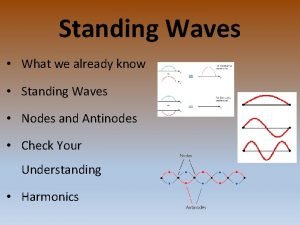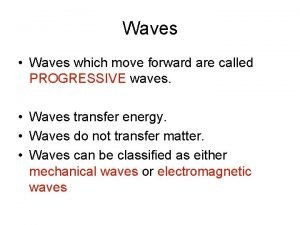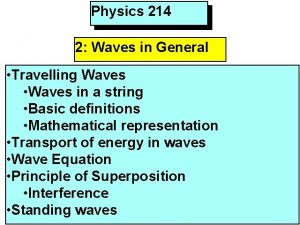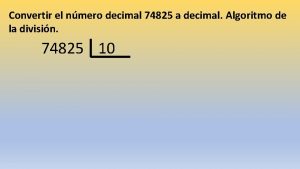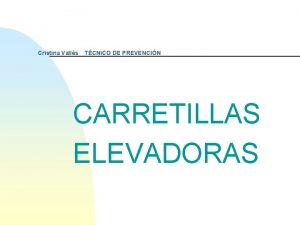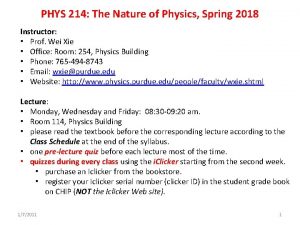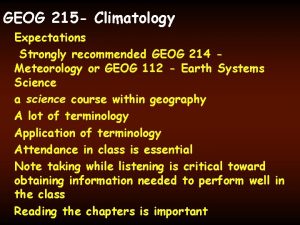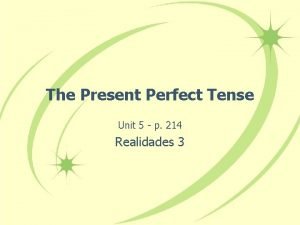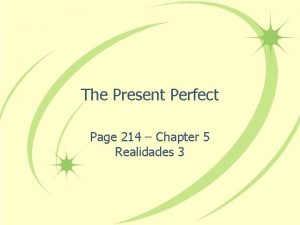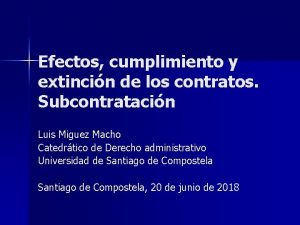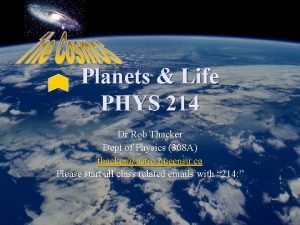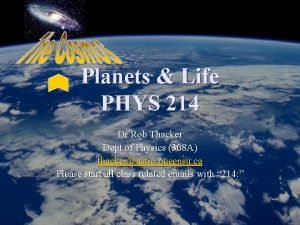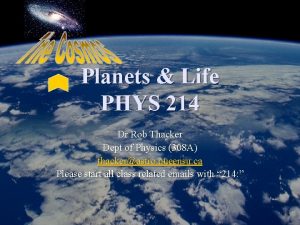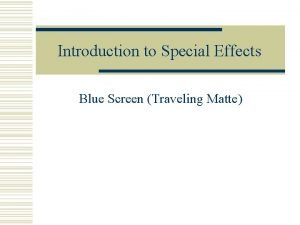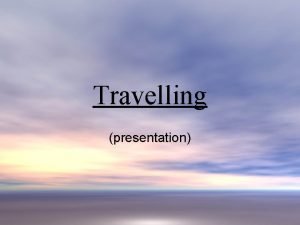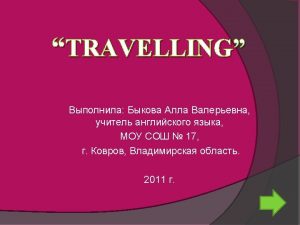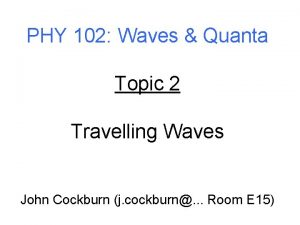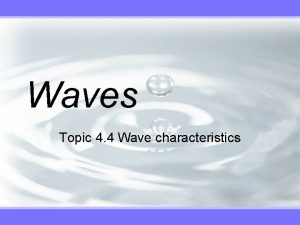Physics 214 2 Waves in General Travelling Waves





























- Slides: 29

Physics 214 2: Waves in General • Travelling Waves • Waves in a string • Basic definitions • Mathematical representation • Transport of energy in waves • Wave Equation • Principle of Superposition • Interference • Standing waves

Propagating vibrations Forcing vibration

• Material of string is vibrating perpendicularly to direction of propagation • TRANSVERSE WAVE • If the vibrations were in same direction • LONGITUDINAL • Each part of vibration produces an oscillating force on string atoms & molecules, which cause neighboring atoms to vibrate

wavelength amplitude A frequency u = number of waves passing a fixed point in one second [ ] = cps = Hz period T = time taken for one wave to pass a fixed point 1 [T] = s; [ ] = m; [A] = m T = speed of wave v =

y y = f(x, t) = ymsin(kx- t) x the position, x, of points on the wave are functions of time i. e. x = x(t) phase

consider points of a fixed amplitude y fixed = y( x , t ) = ym sin (kx - w t ) for these points kx - wt = constant as t increases x must increase dx w k kv -w = 0Û = w Ûv = = phase velocity dt k If the wave is propagating to left y ( x, t ) = y m sin ( kx + wt ) v=- w k

Energy Transport If the waves are of small amplitude Hookes Law holds F = - k y (k is the force constant of string medium) and the waves are made up of propagating simple harmonic vibrations º Linear Waves each string element of mass dm has K. E. 2 K= where 1 1 æ ¶y ö dm = (mdx )(w 2 y 2 mcos 2 (kx - wt )) è ¶t ø 2 2 ¶y = -wym cos(kx - w t) & m is mass per unit length ¶t d. K 1 = (mv )(w 2 ym 2 cos 2 (kx - wt )) dt 2











Amplitude of standing wave 2 Asin(kx )K note that it varies with x The amplitude is zero = positions of NODES sin (kx ) = 0 Þ kx = 0, p, 2 p, , K , np, K Þ x=n 2 The amplitude is a max. = positions of ANTINODES Þ x = (n + 1) 2

Standing waves are formed by incident wave + reflected wave




• Length of the string must be half integer multiples of the wavelength

• The wave with wave length 1 is called the • FUNDAMENTAL wave • The the other waves are called • OVERTONES or HIGHER HARMONICS • 2 is called the • First Overtone • Second Harmonic • 3 is called the • Second Overtone • Third Harmonic


• Frequency of a HARMONIC FAMILY of standing waves is • 3 n . . . • HARMONIC SEQUENCE • The overtone level is characterized by the number of Nodes

• standing wave frequencies in string depend on • geometry of string • length: L • inertial property • density: • elastic property • tension:

Every object can vibrate in the form of standing waves, whose frequencies form harmonic families and are characteristic of the object and depend on the geometry, inertial and elastic properties of the object i. e. on the geometry and forces (external and internal) experienced by the object.

• A forcing vibration can make an object vibrate and produce waves in the object • These waves have the frequency of the forcing vibration • These waves will die out unless they can form standing waves • i. e are vibrating at the natural frequencies of the object • When this is the case most energy is transferred from the forcing vibration to the object • Then the amplitude of the standing waves increases • RESONANCE
 Nodes and antinodes
Nodes and antinodes Progressive waves travelling disturbances that transfer
Progressive waves travelling disturbances that transfer Physics 214
Physics 214 Rdc 214 de 2006
Rdc 214 de 2006 Ayso 214
Ayso 214 Happy 214
Happy 214 The butterfly inside chapter 10
The butterfly inside chapter 10 214 en binario
214 en binario Escuela secundaria 214
Escuela secundaria 214 Ntp carretillas
Ntp carretillas Metform 214
Metform 214 Phys 214
Phys 214 Geog 214
Geog 214 El presente perfecto p 214
El presente perfecto p 214 Notice present perfect
Notice present perfect Art 214 lcsp
Art 214 lcsp Subtle
Subtle Phys 214
Phys 214 Phys 214
Phys 214 Engl 214
Engl 214 What is popular nowadays
What is popular nowadays Travelling movimiento de camara
Travelling movimiento de camara Blue screen special effects
Blue screen special effects Travelling salesman problem discrete mathematics
Travelling salesman problem discrete mathematics Presentation travelling
Presentation travelling Prefer doing something
Prefer doing something Travelling salesman problem lösung
Travelling salesman problem lösung Travelling camera
Travelling camera Modern life is impossible without travelling
Modern life is impossible without travelling Objectives of travelling
Objectives of travelling
